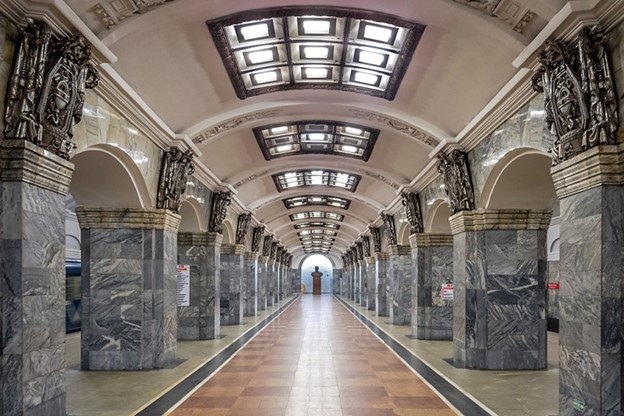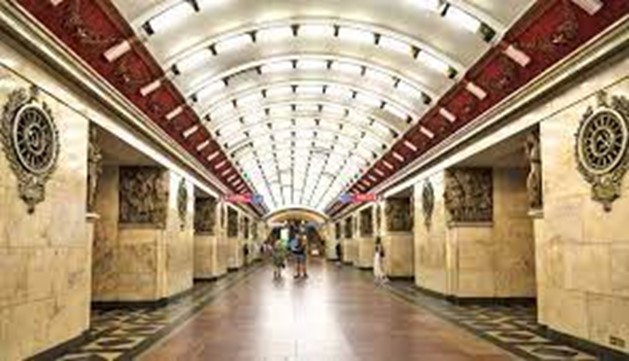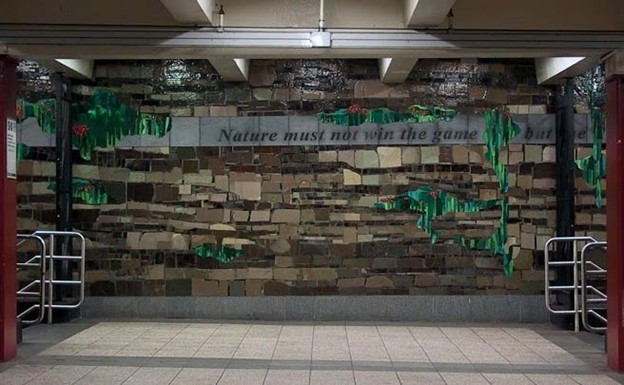
by Ron Becker, Class of 2019
This year marks the 25th anniversary of the death of Harry Weese; he died on October 29, 1998. As docents Steve Redfield, Matt Sheffer, and Chris Pausch recalled in recent Bridge articles, Harry played a large part in preserving the historic “L” loop structure. Although the Daley and Bilandic administrations sometimes considered him a gadfly, I think his support for the “Loop” arose out of his profound and expansive knowledge of rapid transit systems.
That knowledge began in the spring of 1966, when Weese & Associates earned the commission to be the architecture consultants for the Washington, DC Metro system. At the same time another Chicago-based firm, DeLeuw Cather & Company, were commissioned to be the engineering consultants. To better understand what makes a successful subway system, Weese and his team visited 18 city subway systems in 42 days on three continents. They visited London, Paris, Rome, Stockholm, Madrid, and Tokyo among others. They had discussions, drew sketches, compiled notes, and took photographs to see what worked and what didn’t.
Weese was impressed with the Moscow subway stations. He remarked: “The Russians did it with marble. We did it with light.”




Weese’s Washington, DC Metro station design of coffered concrete vaults seemed both modern and reflective of the monumentality of the city’s attractions. Accolades such as “one of the most remarkable public works projects of the 20th Century” and “one of the grandest examples of public space in American architecture” have been bestowed on the design. In 2014, the AIA gave the design its prestigious 25-Year-Award.



Beginning around 1977, Weese & Associates became one of many consultants to the Miami-Dade County Transit System, known as Metrorail. The expertise garnered by Weese became apparent as many of his suggestions prevailed; many going against traditional practices.



In the late 1970s Buffalo, New York, like many other municipalities, began planning new transit systems. This was mainly due to the availability of public funds. Niagara Frontier Transportation Authority (NFTA) was the responsible organization. Its November 1977 Metro Newsletter listed Harry Weese & Associates as architecture consultants.




When Los Angeles, California, the ultimate automobile-loving city, began planning its rapid transit future, it was faced with a formidable task. It needed to lure riders out of their cars and into the system. In July 1981, LA gave a contract to Harry Weese for station design as part of its preliminary engineering and final design analysis.






Shortly after the island-nation of Singapore became an independent country in 1965, it began planning for its transportation needs. It settled on a mainly rail solution rather than an all-bus proposal because of better efficiency and land use. In 1982, De Leuw Cather was awarded a contract to be coordinators to the Singapore Mass Rapid Transit or MRT as the country’s transit system is known. De Leuw Cather sub-contracted with Harry Weese to provide some of the services. The two firms had worked together on the DC Metro.


Closer to home, Harry Weese has completed a number of smaller projects for the CTA and Metra.
So the next time you step into a subway or light rail car, tip your hat to Harry.
CLICK HERE for more stories on The Bridge.


Very informative article. Thanks, Ron!
I enjoyed reading about the subway systems. One feature of Chicago’s that beats Washington DC’s is that our subway goes into the airport iso a block or so away. Thanks Ron for your review.
Peter Weil
Thank you for this information and the lovely pictures!
Great topic, I guess Weese wasn’t just all triangles.
Ron, thanks for finding all the cities that Harry Weese designed transit systems. I thought it was only WDC.
Great article! I loved riding the DC Metro when I lived in that area for a little while. I told people that a Chicago architect designed it and that was long before I was a docent.
I wonder if Weiss were around today if he’d have suggestions for improving our stations to match some of those that he helped later in his career. We could use some upgrading.
Thanks for this fun article, Ron!
Moscow, DC, Miami, Buffalo, Singapore, LA AND London, Paris, Rome, Stockholm, Madrid, and Tokyo! WOW!!
I’m inspired to (re-) visit these cities, but with a focus on their SUBWAYS.